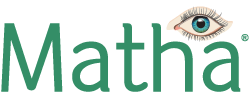Cervical Spondylitis Ayurvedic Treatment
This is an inflammatory condition of spine at cervical (neck) region. It is an autoimmune disorder, ie the immune system (body’s defence mechanism against foreign bodies like germs) attack body’s own cells. Both degeneration and inflammation of cervical spine due to wear and tear cause spondylitis.
Cervical Spondylitis Signs and Symptoms
Pain over cervical region (back of neck), pain spreading down to arms, tingling sensation over neck and arms, disability to hold things or bear weight in hands due to muscle weakness, stiffness of neck and head ache at the back side are the common signs and symptoms.
Cervical Spondylitis Ayurvedic Analysis
Vata and pitta got aggravated due to their causative factors and affect cervical spine resulting in derangement of asthi dhatu (bones) and sandhi (joints). This condition is called ‘greeva graha’ (meaning- stiffened neck) which is grouped under ‘sandhigata vata’ (aggravation of vata in joints) in Ayurveda.
Cervical Spondylitis Causative Factors (Ayurveda)
Old age is the period of increased vata in body and hence age-related wear and tear causes diseases of asthi. As a result, kapha gradually diminishes in asthi and sandhi (joints). Friction between the asthi in neck increases due to loss of sleshaka kapha (the lubricant in joints) causing further reduction in asthi dhatu. The quality of asthi dhatu decreases and abnormal growths appear from bone ends. Stooping posture for a prolonged period, abnormal neck postures while sitting or sleeping, bearing weight over head or shoulders, exposure to cold atmosphere and climate for long periods etc are the common activities that result in vatakopa in neck. Excess intake of cold food and drinks, spicy food, inadequate food intake etc are the dietary causes. Psychological factors that contribute to greeva graha are excessive thinking (anxiety), excessive sadness (depression) and excessive anger or fear.
The person will present pain over cervical region (sandhi shula), swelling and difficulty in neck movements.
Possible Complications of Cervical Spondylitis Disease
Spur formation, narrowing of spinal column (spinal stenosis), nerve compression due to bone spurs and cervical myelopathy are the major complications of cervical spondylitis.
Other systemic conditions and precautions to be taken
Before planning the treatment, consider other systemic conditions (like diabetes, hypertension etc) and the mental status of the patient.
Cervical Spondylitis Disease Management with Ayurveda Treatment
Greeva graha should be treated accordingly, assessing the state of dosha. If only vata is elevated, manage it with snehana therapy (internal and / or external) followed by Swedana therapy. Nasya (nasal instillation of medicated oil or ghee) directly acts at the cervical region. Combined snehasweda (simultaneous application of snehana and Swedana), dry swedana techniques etc are done depending on the patient’s condition. Local treatments like pichu (application of cotton soaked in suitable medicine), bandage etc enhance fast recovery. Nourishing treatment (eg: shashtika pinda sweda) strengthens the cervical vertebrae and associated structures, and reduces symptoms like tingling sensation.
For those who need psychological support, mediation and deep relaxation techniques are useful.
Diet
Wheat, black gram, whole grains, milk, fruits like grapes, mango etc, slightly hot water, small fishes, leafy vegetables, garlic, ghee, sesame oil etc are good for greeva graha. Avoid cold water, alcohol, dry meat, sour tasting fruits and spicy food.
Exercise
After attaining the symptomatic relief, mild to moderate exercise, yoga therapy or physiotherapy can be incorporated under supervision of the physician. Avoid exercise during severe pain and movement restriction.
Cervical Spondylitis Preventive Aspects in Ayurveda
Eat healthy diet having all 6 tastes in order to maintain balance of Tridosha. Avoid abnormal neck postures; do regular exercise; ensure adequate sleep; use a pillow in line with the shoulders while sleeping, stay away from mental distresses; avoid over exposure to cold atmosphere, head bath late in the night, bearing weight on head/ shoulders (eg: loading workers, wearing heavy helmet). Those who are working with desktop/ laptop etc should do intermittent neck exercises in between working hours. Daily oil application over body (especially over neck and other joints) prevents aggravation pf vata.
Importance of Diet
Appropriate diet ensures the effect of medicines and treatment. Consuming food articles that cause aggravation of vata during treatment course will interrupt the action of medicines and procedures. It also rejuvenates the deranged dhatu.
Lifestyle
Posture correction is much important. Mild to moderate exercise can be done under supervision. Maintain healthy body weight. Avoid bearing weight on head or shoulders. Hot water is best for bathing. Do not fast for long time. Take adequate amount of food according to age.
How to get ayurvedic treatment from Matha
1
Contact us
Tell us your health concern via contact form, email, or phone
2
Medical Questionnaire
Fill up the medical questionnaire that we send to you.
3
Consultation
Consult our Chief Physician at the time slot we schedule for you.
Matha Consultation Request Form
In case of a medical emergency, DO NOT wait for the above process. You can inform your situation at our helpdesk ([email protected] / 9847195533)
Our Hospitals
Matha has three hospitals in Trivandrum. You can opt for any one of our hospitals, rooms will be provided based on availability.
Know more about the treatment costs of Matha Ayurveda Hospitals
Our Hospitals
Matha Ayurveda Eye Hospital & Panchakarma Centre
Near Civil Station, Jayaprakash Ln, Kudappanakunnu, Thiruvananthapuram, Kerala 695043
Reception: 04712731352
Matha Ayurveda Eye Hospital & Panchakarma Centre
Eye Hospital Road (Moongode - Meppukada Road), Moongode P O Near, Thachottukavu, Kerala 695573
Reception: 9562997799
Contact
OP Timings
9.00 am - 5.00 pm
Appointment only
Important Links



